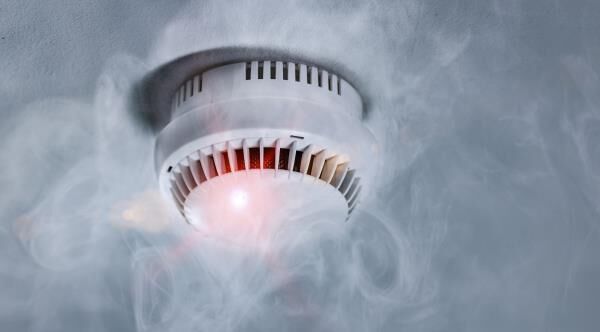(StatePoint) According to the National Fire Protection Association, local U.S. fire departments responded to an estimated 1.35 million fires in 2021 – an average of every 23 seconds. These fires resulted in 3,800 civilian deaths and 14,700 reported civilian injuries, but the devastation didn’t stop there. They also resulted in an estimated $15.9 billion in property damage loss.
Fires can affect not just the health and safety of family, friends and community, but also take a major financial toll on homeowners and businesses. The International Code Council’s 2023 Building Safety Month campaign focuses on general building safety awareness, including how to recognize and practice fire prevention strategies and be aware of potential risks in your home or business.
Potential Dangers of Lithium-Ion Batteries and Chargers
Over the years, lithium-ion batteries and chargers have caused many fires with sometimes devastating consequences. Found within common household products such as electronic toys, small and large appliances, headphones, cellphones, laptops and more, their popularity has grown thanks to their high-energy density and longer lifespan. But with this growth comes the need to learn how to properly handle these products.
Below are actionable steps and fire prevention tips from Beth Tubbs, chief fire protection engineer for the Code Council, to help ensure lithium-ion batteries and chargers are used and stored safely. These are general safety tips, so you will need to refer to each device’s owner manual for specific safety and maintenance instructions.
Buyer Beware: Only purchase an appliance or device with a lithium-ion battery and charger from reputable manufacturers to ensure it’s designed, manufactured, tested and maintained according to applicable safety standards. This is a critical first step in battery fire prevention.
Use an Approved Battery Charger, Correctly: When charging a lithium-ion battery, use a proper charger that is manufacturer-approved or listed as acceptable on the device. Lithium-ion batteries are highly sensitive to charging conditions and using an incorrect charger, or using it incorrectly, can result in the battery overcharging. When a battery overcharges, it can overheat, catch fire and, in the worst-case scenario, explode.
Never charge lithium-ion batteries when you aren’t home to supervise it. If a potentially dangerous situation does arise, you can act quickly to rectify it by unplugging the battery, using a portable fire extinguisher or calling your local fire department for help. When charging appliances, such as micromobility devices (scooters and e-bikes), plug them directly into the electrical receptacle, not through multiplug adaptors or extension cords.
Follow the manufacturer’s guidelines, including the recommended charge time. This will increase the safety and performance of your battery.
Location, Location, Location: When it comes to safety, where you use a lithium-ion battery device or charger is extremely important.
Because these batteries can pose a significant fire risk, it is crucial that they aren’t located in front of an exit or escape route. If the battery is mishandled or exposed to extreme conditions and a fire erupts, you will need an unobstructed escape route.
Store batteries in a cool, dry environment to maintain their performance and safety. It is recommended to store batteries indoors, away from direct sunlight, excess heat, combustibles and potentially flammable substances.
Follow Maintenance Guidelines: Reputable manufacturers provide instructions on how to best maintain the performance and safety of their batteries, often found online or in the device or appliance’s maintenance guide.
Some common maintenance tips include:
• Regularly inspecting the battery and charger for visible damage
• Routinely checking the battery’s charge status
• Observing and noting the runtime of your battery (and any changes in this time)
• Disconnecting the battery from the charger once it reaches full capacity.
Resources for Fire Prevention
Lithium-ion battery fires can start in a matter of seconds; it’s important to use them safely.
The Code Council’s Building Safety Month website has several resources to help you understand and implement key fire prevention measures and protect your home or business. Access these resources by visiting iccsafe.org.
*****
Photo Credit: (c) audioundwerbung / iStock via Getty Images Plus









